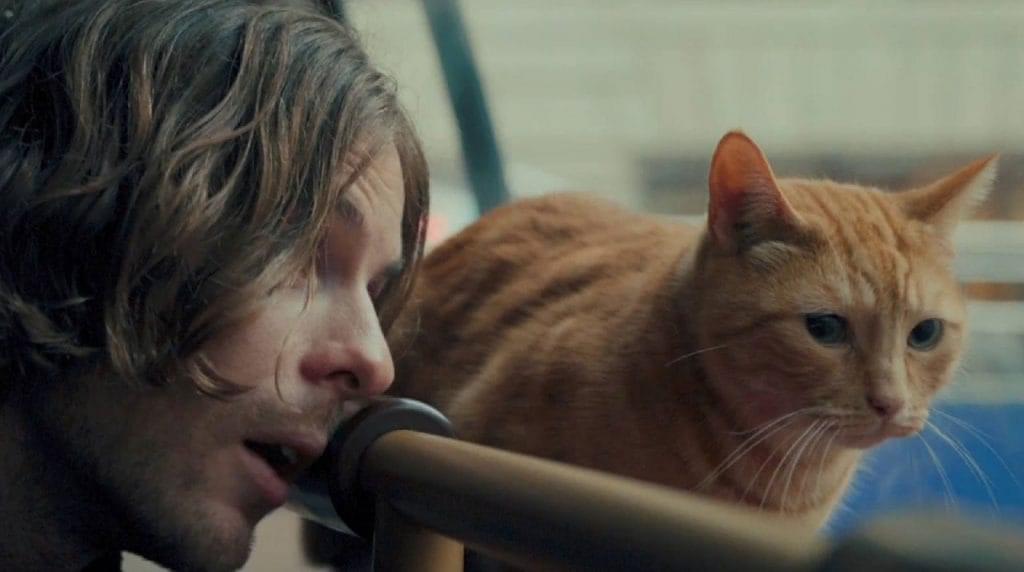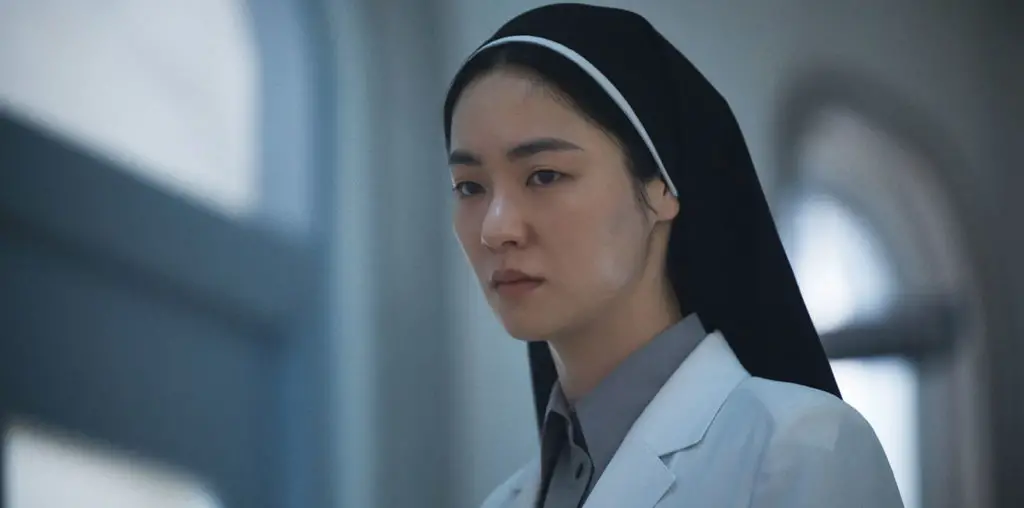
This DVD provides a crucial look at an area which will be unknown territory for many Western viewers, even connoisseurs of experimental film: experimental film from the Middle East. What ties these excellent films together is their determination to resist the narrow stereotyping of Islam and of the Middle East which is so prevalent in Western media, and a creative use of images and sounds to invent a more nuanced, multifaceted discourse. The DVD is excellently packaged and produced, providing helpful biographies and interviews with all of the artists, most of whom will be new to Western audiences.
“Transit,” an engrossing film by Taysir Batniji, uses a simple slide show of clandestinely shot stills to document the endless waiting endured by Palestinians and Egyptians attempting to travel between Gaza and Egypt. The slides show men and women sleeping on uncomfortable couches and on the floor of bleak-looking hallways, playing cards, and guarding enormous piles of luggage. They occasionally smile or socialize, but most often look completely physically and emotionally exhausted by their endless ordeal.
Each image is seen for three seconds. The accompanying sound is the sound of a slide projector carousel. The images are interspersed with frequent black frames, emphasizing the huge, blank spaces of time which are being stolen out of these people’s lives, as a consequence of the Israeli occupation. The haphazard compositions, not without beauty, underscore the surreptitious way in which the pictures were taken, which in turn underscores the lack of freedom in Gaza.
In “Dieu Me Pardonne,” Moroccan artist Mounir Fatmi creates a dense mesmerizing collage, much of it from TV footage, of bombs, guns,
explosions, masked gunmen, riots and fighting in the streets. These images of turmoil are intermixed with porn footage, scientific diagrams, a hollywood dance routine, and countless other shots. Taken together, the collage evokes a mixture of fear, desire, anger, and chaos. Fatmi uses his profound visual and musical skills to combine these images, along with a harrowing electronic music score, in a complex, riveting composition. The film includes a quote from Artaud, and the video overall has the Artaudian feeling of a convulsive, feverish dream, mixing terror and desire, but it also has a strong underlying structure, based on a quote from the prophet Mohamed (“the first gaze at a woman is for you, the second is for the devil, the third is a crime.”) This quote delineates the video’s three visually distinct sections. It also contextualizes the imagery as a look at the fear of female sexuality as an underlying element in war and violence.
“Wet Tiles” by Lamya Gargash from United Arab Emirates, is a surprisingly accomplished and expressive student film. It concerns a young woman who is seemingly being prepared for an arranged marriage, but the story, told only obliquely through a series of brief images, is more implied than spelled out. (The girl’s passive body is frequently intercut with images of a chicken being skewered and a doll with its head being twisted.) The use of dramatic camera angles, changes of film exposure and camera focus, all serve to express her inner state of agitation.
In “Allahu Akbar,” the US based filmmaker Usama Alshaibi has created joyful and playful animations out of the traditional geometric themes of Islamic art. These complex geometries are rendered in simple black and white, and then superimposed and spun around their central axis, in a close rhythmic relationship with the lively soundtrack of traditional and popular Iraqi music. The result is a giddy playfulness, reminiscent of psychedelic Pop Art, and far removed from the contemplative quiet I normally associate with Mosques and the inner courtyards of traditional Arab architecture. The video also recalls the films of Harry Smith. My only complaint is that, for a person like me who really loves this music, I could have watched a much longer film which used at least one complete musical selection!
“Untitled Part 3B: (as if) Beauty Never Ends..” is a simple, visually didactic, yet powerfully moving film by Canadian Jayce Salloum. The film revolves around a rather poetic monologue by a Palestinian refugee, in which he relates how he returns to his destroyed house, and the house recites to him the story of how the Israelis came and massacred the inhabitants of the refugee camp. Lovely shots of orchids are superimposed over stark, horrifying images of the dead bodies being covered and carried away. Anyone who has experienced the bewilderment of seeing a beautiful Spring day, while something disastrously wrong is occuring in their personal life, will have a hint of the kind of experience being depicted here. Salloum uses simple collage devices to maximize the impact of this footage, not letting the viewer back away from the full horror, yet providing brief spaces of black in which we can absorb what we are seeing and hearing.
The one low point in the DVD collection is “Dansons,” a video by Algerian Zoulikha Bouabdellah. Bouabdellah attempts to express her dual Algerian and French identity by donning tricolor scarves, and then showing us her belly as she attempts to dance to the wooden rhythms of “La Marseillaise.” The actual question of what it feels like, subjectively, to be both French and Algerian, and what the outward, political and social consequences are of such a dual identity, would be a fascinating one to explore. By keeping her exploration on the level of the symbolic and conceptual, Bouabdellah simultaneously robs it of substance and bores the viewer. (Neither her dancing nor her filmmaking are outstanding.)
“K3 (Les Femmes)” by French filmmaker Frédérique Devaux will seem familiar, in style, to viewers who are used to hand-processed, handmade experimental film as it is practiced in the West. Scratching, painting, tinting, and optical reprinting all make this film resemble an experimental American film from the 1960s. But the photographed imagery, of Algerian women preparing food and caring for their children, as well as the Algerian women’s music, which is cut up, looped, and collaged to form the soundtrack, mark this film as distinctly made from a female and Algrerian perspective.
At 30 minutes, “Ça Sera Beau, From Beyrouth with Love,” by Lebanese filmmaker Waël Noureddine, is the longest, most complex, and most ambitious film on the DVD. It is a 16mm portrait of a city, a stark urban landscape replete with bullet-ridden, bombed out buildings, mines covered with greenery, pockets of prosperity, and a heavy military presence. The soundtrack is a collage of gunfire, explosions, and snatches of pop music, which are always cut off before they become too lulling. The title comes from a youth’s half-ironic description of the image his own suicide will make, and the film portrays the young people of Beirut as having to choose between spacing out on heroin, religious fanaticism, or violence. One can only hope that more of them, like Noureddine, will choose to become artists.

